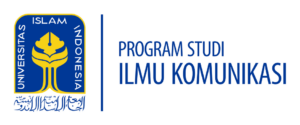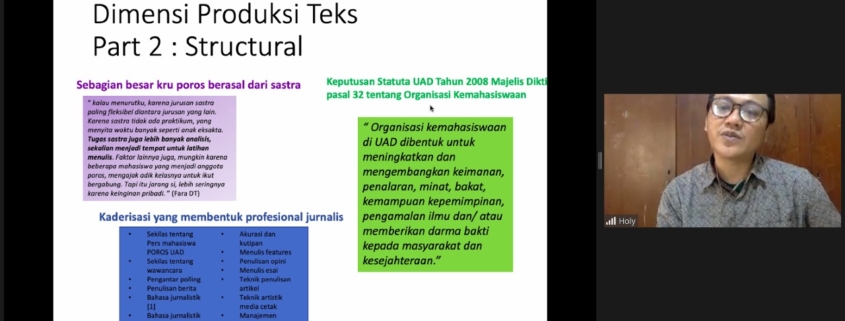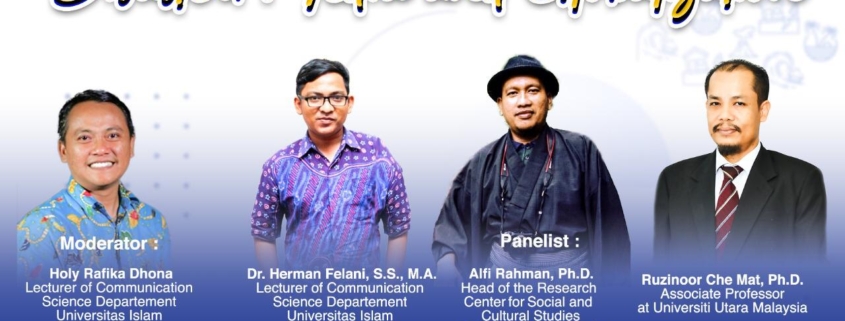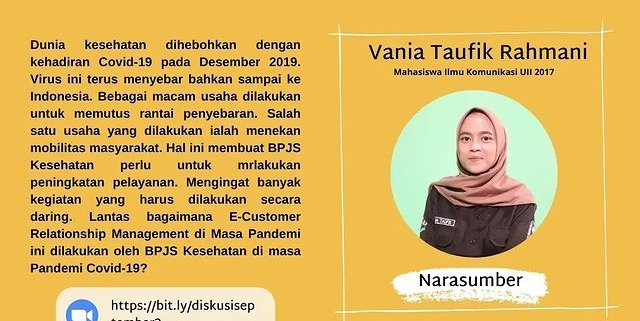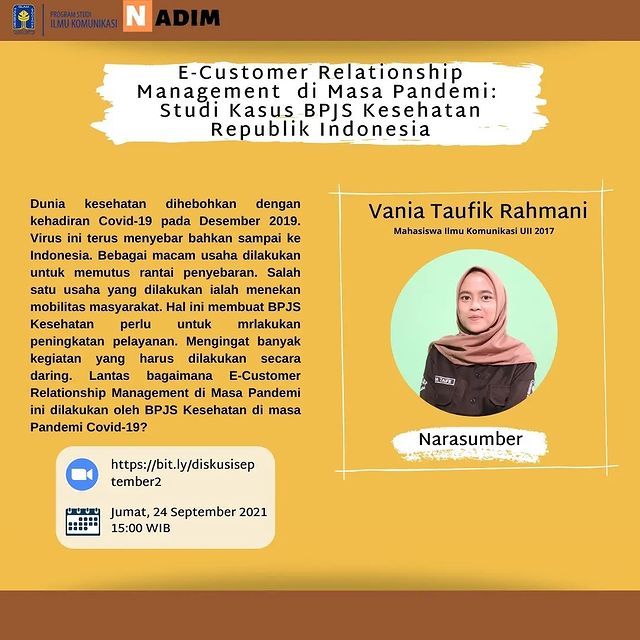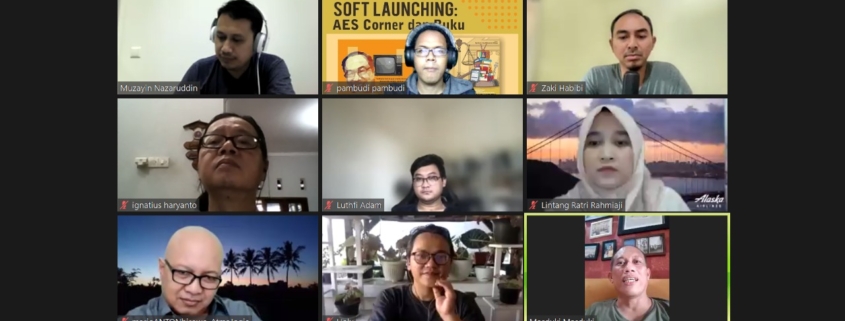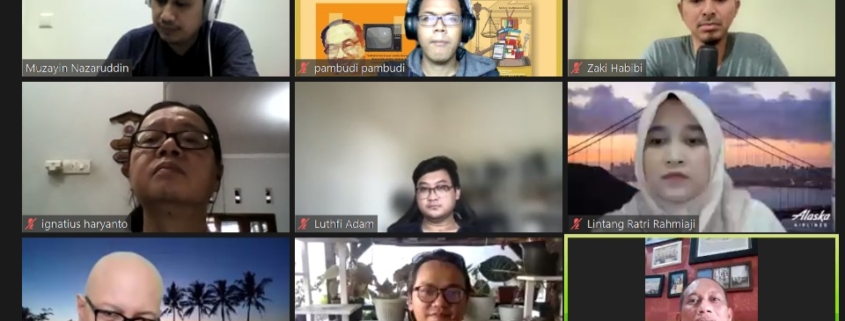Many students think that the Nadim Center for Alternative Media Studies and Documentation (PSDMA) is a library. It’s no wonder that Nadim’s PSDMA is physically filled with books. Many things Nadim did. As the name suggests, a center for studies and documentation, Nadim conducts studies and documentation such as discussions, research, and alternative media collection. It is a Center for Studies and Documentation Center specialized in alternative media.
This introduction to PSDMA Nadim became a topic of casual chat at the International Program Communication Department, Universitas Islam Indonesia (UII). This teatime invited Ifa Zulkurnaini, a staff member and researcher at Nadim. The teatime was hosted by Lani Diana, a 2018 IPC UII student, on Friday, September 24, 2021.
Ifa explained that the PSDMA Nadim was initiated by one of them by Muzayin Nazaruddin, a UII Communications Lecturer (Lecturer specialist in Media, Disasters, and Semiotics) who at that time served as Head of the UII Communication Science Laboratory. “He wants a forum for students who want to do research, community service, share knowledge, or discuss. It’s odd if it’s accommodated in the laboratory, it doesn’t connect. So PSDMA Nadim was made in 2008,” Ifa explained.
Regarding the collection at PSDMA Nadim, it is not only owned books; PSDMA Nadim prioritizes alternative media, meaning that it is not media that is commonly found. NADIM itself is taken from a bibliographer of thousands of manuscripts in Baghdad named Ibn Al Nadim, who lived in the 990s. Apart from collecting, he also reads and catalogs them. Likewise, PSDMA Nadim has books and films, pamphlets, tabloids, magazines, and journals. “If you want to watch old films, but you can’t go to the cinema, you can borrow them from Nadim,” said Ifa when telling stories about Nadim’s collection, some of which can be borrowed online.
In addition to collecting several alternative media, Nadim has activities that anyone can follow, whether students or the general public, namely discussions held once or twice a month. “Every month, students or lecturers from UII and other universities fill it.”
